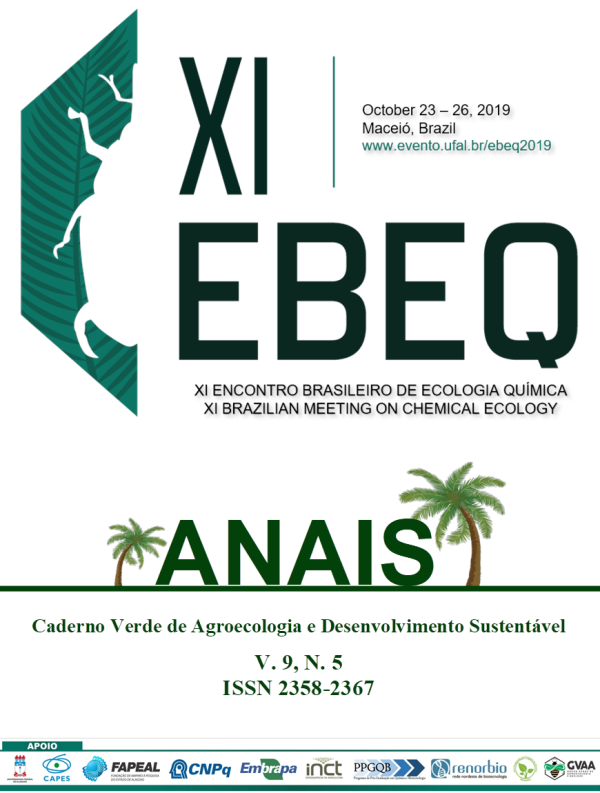DEVELOPING SMARTER SOLUTIONS FOR ENSURING CROP AND LIVESTOCK HEALTH BASED ON CHEMICAL ECOLOGY
Palavras-chave:
HOST, PEST, ATTRACTANT, REPELLENT, VOLATILE, PHENOTYPE.Resumo
Invertebrate arthropod pests (insects and arachnids ie. ticks and mites) use their sense of smell to detect and locate suitable hosts (plants, animals) for feeding prior to reproduction and for oviposition. The odour of hosts comprises of attractive and repellent volatile organic compounds (VOCs), and it has been shown that hosts that are more resistant to pests produce higher levels of repellent VOCs, compared to those hosts that are less resistant. This ecological interaction can be exploited in crop and livestock protection by using attractive VOCs to pull pests into traps, using repellent VOCs to push pests away from hosts, and using both sets of VOCs at the same time eg as part of a push-pull strategy. Although the use of synthetic attractive and repellent VOCs in pest management has been explored, this technology is not always sustainable for extensive or smallholder crop and livestock production systems because protection can be short-lived or difficult and expensive to deliver. A further development of the use of VOCs is that they can be delivered by the hosts themselves, eg by deployment of botanically-derived attractants, and by breeding/selection of hosts with altered volatile phenotypes. The prospect of exploiting botanically-derived attractants and host volatile phenotypes for ensuring crop and livestock health will be discussed with a focus on three major pests affecting tropical and sub-tropical agriculture.Downloads
Publicado
Como Citar
Edição
Seção
Licença
Termo de cessão de direitos autorias
Esta é uma revista de acesso livre, em que, utiliza o termo de cessão seguindo a lei nº 9.610/1998, que altera, atualiza e consolida a legislação sobre direitos autorais no Brasil.
O(s) autor(es) doravante designado(s) CEDENTE, por meio desta, publica a OBRA no Caderno Verde de Agroecologia e Desenvolvimento Sustentável, representada pelo Grupo Verde de Agroecologia e Abelhas (GVAA), estabelecida na Rua Vicente Alves da Silva, 101, Bairro Petrópolis, Cidade de Pombal, Paraíba, Brasil. Caixa Postal 54 CEP 58840-000 doravante designada CESSIONÁRIA, nas condições descritas a seguir:
O CEDENTE declara que é (são) autor(es) e titular(es) da propriedade dos direitos autorais da OBRA submetida.
O CEDENTE declara que a OBRA não infringe direitos autorais e/ou outros direitos de propriedade de terceiros, que a divulgação de imagens (caso as mesmas existam) foi autorizada e que assume integral responsabilidade moral e/ou patrimonial, pelo seu conteúdo, perante terceiros.
O CEDENTE mantêm os direitos autorais e concedem à revista o direito de divulgação da OBRA, com o trabalho simultaneamente licenciado sob a Licença Creative Commons do tipo atribuição CC-BY.
O CEDENTE têm autorização para distribuição não-exclusiva da versão do trabalho publicada nesta revista.
O CEDENTE têm permissão e são estimulados a publicar e distribuir seu trabalho online (ex.: em repositórios institucionais ou na sua página pessoal) a qualquer ponto antes ou durante o processo editorial, já que isso pode gerar alterações produtivas, bem como aumentar o impacto e a citação do trabalho publicado.










